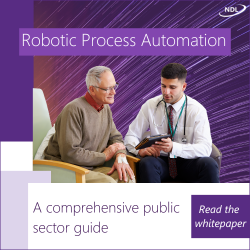
Airedale General Hospital has gone live with a new geospatial system to help manage its RAAC (reinforced autoclaved aerated concrete) monitoring and repairs programme.
The system became fully operational in April, after an initial implementation by BIS Consult in November of last year.
Airedale NHS Foundation Trust has used an Esri geographic information system (GIS) in the project, which is reported to have already produced 50% efficiency savings in the RAAC surveying process, which involves a team of eight inspecting 20,000 RAAC planks across 52 departments.
Inspection data is now collected on iPads using custom forms, which helps dictate the risk rating of each plank. Planks are surveyed either monthly, three-monthly, six-monthly or yearly, depending on their rating, in line with current guidance.
The output helps instruct the survey team which wards they need to survey and which planks are due for inspection.
The digital workflow also provides Airedale with a solid audit trail to help with compliance and reporting, which is directly linked to the government funding it receives to manage RAAC.
Powerful tool
Estates project manager at Airedale General Hospital, Richard Burgin, said: “The GIS is a powerful tool which helps manage the sheer volume of work, provides a single source of truth on RAAC risk and helps prioritise where repairs and interventions should focus to keep the hospital running safely.
“The digital approach increases the accuracy of the data and makes it more shareable, improving the ability to communicate the scale and complexity of the problem, with both internal and external stakeholders.”
Paul Clarke, head of government at Esri UK, said: “The Airedale General Hospital project is the first of its kind in the UK and showcases best practice in the advancement of RAAC management. Defining the risk from RAAC is a significant challenge across the public sector, including hospitals, schools and other public buildings.
“Interest in the geospatial approach has been high as mapping the indoors helps organisations to understand the risk in a cost-effective, accurate and efficient way and then prioritise mitigation works.”





